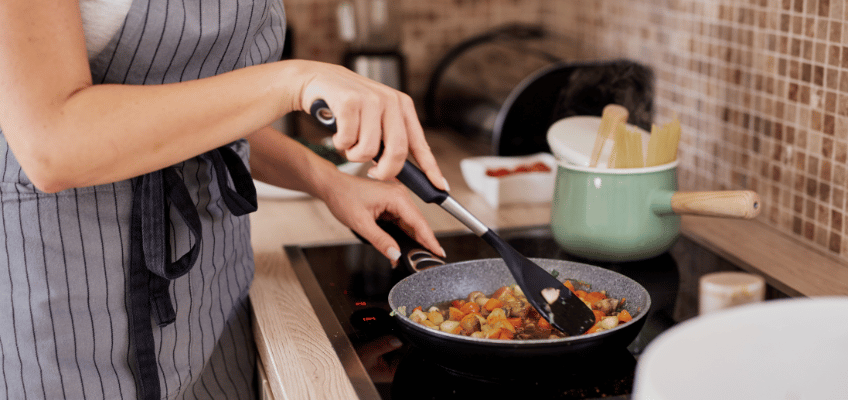
Can You Cook with Mead? A Complete Guide to Cooking with Honeywine
Absolutely! You can cook with mead, and it opens up a world of culinary possibilities that many home chefs have yet to explore. This ancient honey wine brings a unique depth of flavor to both savory and sweet dishes, making it an exceptional cooking ingredient that rivals traditional wine and beer in the kitchen.
TLDR
- Mead’s honey base creates unique sweetness and depth that works in both savory and sweet cooking applications
- Essential techniques include deglazing, marinating, creating sauces, and slow cooking methods
- Traditional mead offers the most versatility, while flavored varieties work best when their taste complements the dish
- Store opened cooking mead in the fridge and use moderate-quality bottles rather than premium varieties for best value
Ready to start cooking with mead? The natural sweetness and complex flavors of our Montana-made meads can transform your favorite recipes into something truly special. From tender marinades to rich glazes, mead brings the ancient tradition of honeywine into your modern kitchen. Explore our complete mead collection to find the perfect varieties for your culinary adventures.
What Makes Mead Perfect for Cooking
The Natural Sweetness and Complexity of Honey Wine
Mead’s foundation of fermented honey creates a complex flavor profile that transforms when exposed to heat. Unlike regular wine, mead carries the natural floral notes and richness of honey, which caramelizes beautifully during cooking. When you pour mead into a hot pan to deglaze, the alcohol evaporates while leaving behind concentrated flavors that add both sweetness and depth to your dish.
The fermentation process creates layers of flavor that complement a wide range of ingredients. Whether you’re working with meat, vegetables, or creating a dessert, mead’s balanced profile means it won’t overpower delicate flavors while still providing enough character to stand up to robust dishes. To better understand what mead tastes like, consider how these flavor notes translate into cooking applications.
How Mead Compares to Other Cooking Alcohols
When compared to white wine or beer, mead offers distinct advantages in the kitchen. While white wine provides acidity and beer adds bitterness, mead contributes natural sweetness without the harsh tannins found in some wines. This makes it particularly versatile for marinades, where the honey base helps tenderize meat while infusing flavor.
Beer works well for certain applications like braising, but mead’s alcohol content typically ranges higher, providing better flavor concentration when reduced. Unlike vinegar-based ingredients, mead maintains its smooth character even after extended cooking times, making it ideal for slow cooker recipes and long braising sessions.
Essential Mead Cooking Techniques
Creating Rich Sauces and Glazes
Mead excels at creating glossy, flavorful sauces and glazes that coat proteins beautifully. Start by reducing mead in a pan with butter, garlic, and your choice of spices. The natural sugars in mead help create a rich glaze that works particularly well with chicken, pork, or fish.
For a simple mead sauce, combine equal parts mead and stock in a roasting pan after removing your protein. Add salt, pepper, and fresh ginger, then simmer until the sauce reduces by half. The result is a glossy sauce with complex flavor notes that pairs well with roasted vegetables or potatoes.
Marinating Meats and Poultry
The honey content in mead acts as a natural tenderizer, breaking down tough fibers in meat while adding flavor. Create a marinade by combining mead with garlic, onions, and your preferred spices. Let chicken or steak rest in this mixture for several hours in the fridge before cooking.
For best results, use about one cup of mead per pound of meat, adding complementary ingredients like mushrooms for earthy dishes or apples for a sweet and savory combination. The marinade works particularly well with tougher cuts that benefit from extended marinating time.
Deglazing and Building Flavor Bases
After searing meat in a hot pan, pour mead into the pan to deglaze and capture all those flavorful brown bits. The mead will bubble and steam, loosening the caramelized proteins while creating the foundation for pan sauces. Add flour to thicken if desired, or incorporate butter for richness.
This technique works especially well when cooking steak or pork, where the mead’s sweetness balances the savory meat flavors. The alcohol cooks off quickly, leaving behind concentrated honey notes that enhance rather than mask the natural meat flavors.
Best Mead Recipes for Different Dishes
Savory Main Courses with Mead
Traditional mead works beautifully in savory applications, particularly with roasted meats. Try braising beef in a slow cooker with mead, tomatoes, and root vegetables for a hearty meal. The long cooking time allows the mead to meld with the other ingredients, creating a rich, complex sauce.
For poultry, create a simple roasted chicken recipe by rubbing the bird with salt, pepper, and spices, then placing it in a roasting pan with mead, onions, and potatoes. As the chicken cooks, the mead combines with the drippings to create natural gravy. You can explore mead food pairings to discover which dishes complement different mead varieties.
Fish preparations also benefit from mead’s gentle sweetness. Poach salmon or other delicate fish in a mixture of mead and herbs, keeping the heat low to prevent the alcohol from becoming harsh. The result is tender fish with subtle honey notes.
Sweet Applications and Desserts
Mead’s natural affinity for fruit makes it perfect for dessert applications. Poach pears or apples in mead with cinnamon and a splash of additional sweetness for an elegant dessert. The fruit absorbs the mead’s complex flavors while maintaining its texture.
For baking applications, substitute mead for other liquids in recipes calling for wine or beer. It works particularly well in cakes and bread recipes, where the honey notes complement flour-based dishes. Try incorporating mead into glazes for baked goods, combining it with sugar and butter for a glossy finish.
Slow Cooker and Roasting Pan Methods
The slow cooker is ideal for mead-based recipes because the low, steady heat allows flavors to develop without burning off the alcohol too quickly. Combine mead with vegetables, meat, and stock for hearty stews that simmer all day.
When using a roasting pan, pour mead around roasts during the final hour of cooking. This prevents the sugars from burning while still allowing the flavors to concentrate. The pan drippings can then be used to create gravy by stirring in a bit of flour and additional liquid as needed.
Tips for Cooking with Different Types of Mead
When to Use Traditional vs. Flavored Meads
Traditional mead made from pure honey provides the most versatile cooking base, working well in both sweet and savory applications. Its clean honey flavor won’t compete with other ingredients, making it ideal for delicate dishes or when you want the mead to enhance rather than dominate.
Flavored meads, particularly fruit varieties, work best when their flavors complement the dish. A berry mead pairs beautifully with game meats, while spiced meads work well in fall and winter recipes featuring root vegetables and hearty proteins. To learn about mead’s ingredients, consider how different honey sources and added fruits affect the cooking properties.
Storage and Selection Guidelines
Store opened mead in the fridge and use it within a few weeks for best cooking results. Unlike drinking, cooking with mead doesn’t require the finest bottles – save your premium meads for sipping and use good quality but less expensive options for cooking.
When selecting mead for cooking, consider the dish’s flavor profile. Dry meads work better for savory applications, while sweeter varieties complement desserts and glazes. The alcohol content doesn’t matter as much since most will cook off, but higher alcohol meads may provide more concentrated flavors when reduced.
For the best cooking experience with mead, explore our award-winning mead collection to find varieties that match your culinary style. Different mead styles bring unique characteristics to your cooking, and having our Fruit Mead Variety Pack on hand gives you options for various recipes.
Frequently Asked Questions
What dishes work best when cooking with mead?
Many dishes benefit from mead’s unique flavor profile, particularly roasted meats, braised vegetables, and fruit-based desserts. The natural sweetness pairs exceptionally well with pork, chicken, and fish, while the honey notes complement root vegetables and seasonal produce.
How much mead should I use in cooking recipes?
Start with small amounts – typically 1/4 to 1/2 cup for most recipes serving four people. You can always add more, but it’s difficult to balance overly sweet dishes once too much mead has been added. The key is to let the mead enhance, not overpower, your other ingredients.
Does the alcohol content matter when selecting mead for cooking?
While most alcohol evaporates during cooking, higher alcohol meads often provide more concentrated flavors when reduced in sauces and glazes. However, the specific alcohol percentage is less important than the overall flavor profile and how it complements your dish.
Can I substitute mead for wine in any recipe?
Generally yes, though you may need to adjust other sweet ingredients since mead is naturally sweeter than most wines. When substituting mead for white wine, reduce any added sugar or honey in the recipe by about half to maintain proper balance.
What’s the best way to store mead for cooking purposes?
Keep opened bottles in the fridge and use within 2-3 weeks for optimal flavor. Unlike fine drinking meads, cooking meads don’t need special storage conditions, but they should be kept cool to prevent spoilage. A glass container works better than leaving it in an opened bottle.
Should I use expensive mead for cooking?
Save your premium meads for drinking and use good quality but moderately priced options for cooking. The cooking process will mask some of the subtle flavors that make expensive meads special, so focus on finding meads with good basic honey character rather than complex aging or rare ingredients.
How Much Honey to Use When Making Mead (Exact Ratios Explained)
How Long Should Mead Age? Complete Aging Time Guide
Best Yeast for Mead: Top Strains Compared



